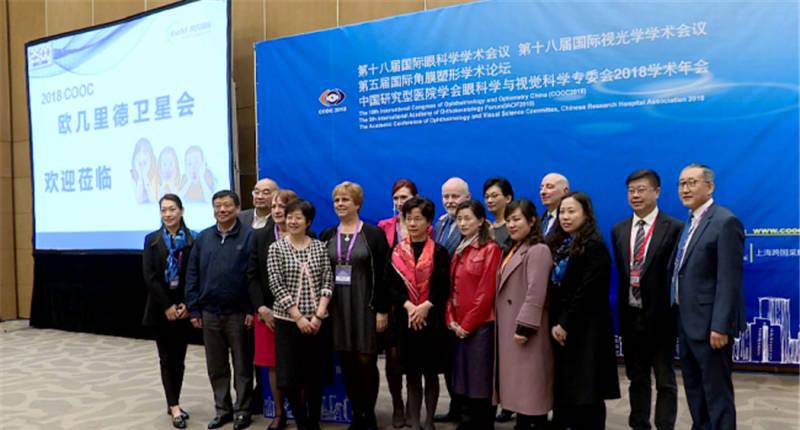On March 23, the 18th International Conference on Ophthalmology, the 18th International Conference on Optometry, and the 5th International Orthokeratology Academic Forum opened in Shanghai. The conference invited well-known professors, experts and scholars at home and abroad to attend the conference and make academic reports, the conference brought the latest clinical and basic research results covering the academic fields of ophthalmology, optometry, orthokeratology at home and abroad, as well as the latest progress in the prevention and control of myopia in China.

Myopia or the evolution of adaptation to modern life
In addition to genetics, environmental and diseases, risk factors for developing myopia are also evolutionary consequences of human development. Zhou Xiangtian, a researcher at Wenzhou Medical University, said that myopia is due to a disease caused by long-term use of the eyes, or the evolution to adapt to modern life is worth exploring.
Now more and more people use computers to work, -3.00d myopia refers to the focus of the human eye is exactly in front of the 33cm. At this distance, the eyes no longer need to be adjusted when working, and the age of old vision can also be postponed.
Zhou Xiangtian pointed out in his speech that myopia is caused by a variety of factors. These include genetic factors, environmental factors, and evolution to adapt to modern life. Zhou Xiangtian also stressed that outdoor exercise can delay the progression of myopia, and light can increase the content of retinal dopamine.
In Hong Kong, parents are more willing to choose a film shaping mirror for their children
China's first white paper on visual health, "National Visual Health", released by the China Health Development Research Center of Peking University, shows that myopia has become a "national disease" in China. Among people over the age of 5 in China, 1 in 3 people is myopic. If effective policy intervention is not taken, it is expected that by 2020, the prevalence of myopia in the population over 5 years old in China will increase to about 51%, and the number of people will reach 700 million.
In the face of the huge myopia population of adolescents, Pauline Cho, a professor at the School of Ophthalmology at the Hong Kong Polytechnic University, surveyed 196 parents of students in Hong Kong and found that parents of children of the right age group were concerned about their children's myopia progression and were actively seeking ways to control myopia. Professor Pauline Cho hypothesized that orthokeratology lenses, daily wearing soft contact lenses and myopia-controlled glasses had the equivalent effect of controlling myopia, and interviewed parents in two groups, one of which had 86% of the choice of orthokeratology lenses, and the other group was also very open to orthokeratology.
After investigation, it was found that orthokeratology mirrors have become the first choice for parents to improve their children's myopia because of their convenience and safety. Pauline Cho also pointed out that orthokeratology is not only to help children see the world, it also has more important corrective and therapeutic effects.